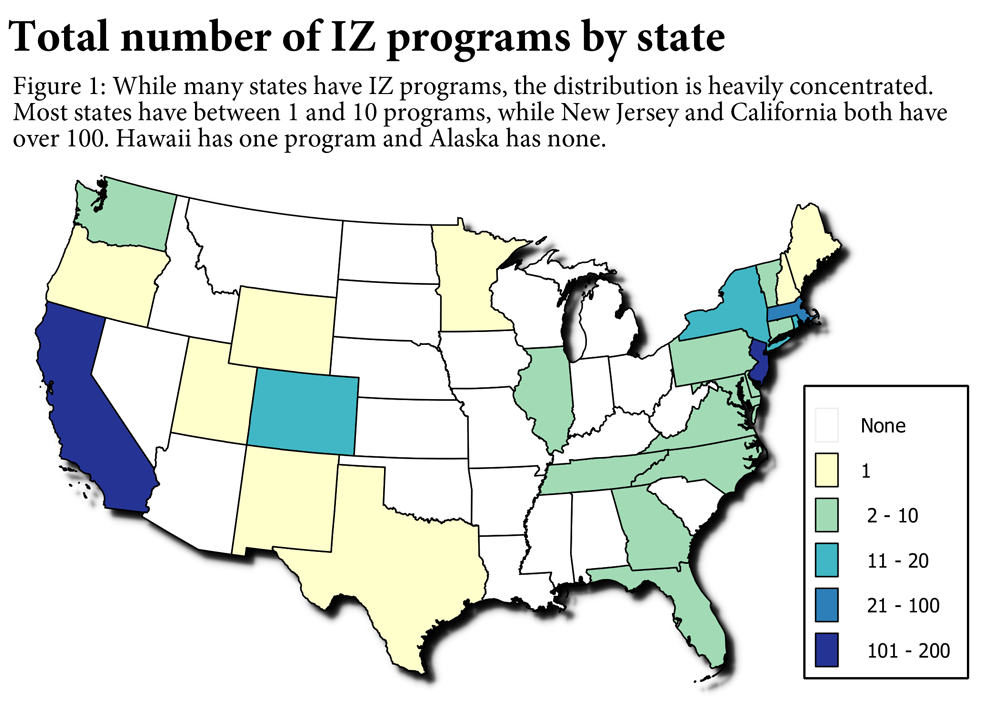You must be logged in to view this page. If you are making a purchase or registering for an event, please either log in or create a free account to complete your order.
Study: Why Do Communities Adopt Inclusionary Zoning?

Planners play a critical role in building the framework for how communities respond to the challenges of affordability, economic diversity, and the prosperity of all residents. These challenges must be met with a combination of proven tools and programs, targeted and coordinated investments and incentives, and thoughtful strategies for community development.
Tools like Inclusionary Zoning can go a long way toward helping a community realize its full economic and inclusive potential.
New Study Reveals Keys to Inclusionary Zoning Adoption
What Makes Inclusionary Zoning Happen, a study published last month by the National Housing Conference — an APA partner — shows why some communities are more likely to adopt Inclusionary Zoning policies than others. NHC's Brian Stromberg gave us the scoop on what IZ programs look like and why they should matter to community leaders like planners:
Inclusionary zoning (IZ) uses local regulation of land use to require or incentivize the production of affordable housing, tying affordable housing creation to the production of market-rate housing. In 2014, the National Housing Conference and the National Community Land Trust Network, with support from the Lincoln Institute of Land Policy, published a study that looked at more than 500 inclusionary zoning housing programs in 482 local jurisdictions.
One of the products of this work was a national database of IZ. This database was used by researchers from the University of Maryland to analyze the local characteristics that led inclusionary zoning policies to be adopted more quickly in some communities than others.

Map from the National Housing Conference study What Makes Inclusionary Zoning Happen.
This first-of-its-kind study provides some insight into what IZ programs look like:
- Most IZ programs were adopted recently. Fifty-four percent of local IZ programs were adopted between 2000 and 2009, and another eight percent have been adopted since 2010.
- More than 80 percent of the IZ programs in the database are mandatory, meaning developers are required to include affordable units as part of their developments. However, many of these mandatory programs include alternative cost offsets, including pay-in-lieu fees or off-site construction.
- IZ programs target low- and moderate-income households. The majority of IZ programs (53%) target households with incomes between 51 and 80 percent of the local area median income (AMI). IZ programs generally do not target very low-income households: only two percent of IZ programs in the database target households with incomes below 50 percent of AMI.
- IZ program unit counts tend to be modest. Forty percent of IZ programs require less than 10 percent of the units to be affordable, and 80 percent of the programs require less than 20 percent of the units to be made affordable.
Strategic Insights for Inclusionary Zoning
Study results can also help inclusionary zoning advocates better understand where to focus their efforts.
First, state-level advocacy is essential. While perhaps not surprising, the study found that IZ programs appeared much more quickly in jurisdictions located in states that had either explicitly required IZ programs or had coalitions of jurisdictions lobbying for statewide IZ policies.
Second, affordability challenges are an important driver of IZ adoption. The struggles of rent-burdened households are not guaranteed to motivate policy change. In the case of IZ, however, they seem to have an effect.
Finally, educating homeowners on the community benefits of affordable housing can help increase support for the development of IZ programs. One characteristic with the strongest negative impact on the adoption of IZ programs was a jurisdiction's ownership rate. The perceived negative aspects of affordable housing can lead some communities to resist the development of affordable housing. Advocacy in these communities should emphasize the social and economic benefits of having a range of housing available.
Inclusionary housing policy is often an important part of a local comprehensive affordable housing plan. Tying the production of affordable housing to the development of market-rate housing can be an effective way of promoting economic diversity and expanding access to opportunities for low-income families.
Furthermore, many communities across the country increasingly seek to develop local tools and strategies, as federal affordable housing resources remain strained and local fair housing regulations are expanded under the U.S. Department of Housing and Urban Development's Affirmatively Furthering Fair Housing rule. The results from this research can help policymakers and advocates target education and outreach efforts to increase the adoption of local IZ programs.
Top image: Detail of a model of Shady Grove Station-Westside, a development with moderately priced dwelling units in Montgomery County, Maryland. The county is considered a national leader in Inclusionary Zoning. Photo by Flickr user Dan Reed (CC BY-NC 2.0).


